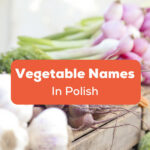안녕하세요! (Annyeonghaseyo, Hello!) Want to speak Korean like a native? Well, you’ve come to the right spot.
Today, we’ll talk about Korean pronunciation. It’s an essential skill that enables seamless communication in Korean.
We’ll begin with the basics: Hangul.
Essentially, it represents the sounds of Korean letters.
Here, we’ll cover everything, including consonants, vowels, and word flow.
By the end, you’ll have a solid understanding of Korean pronunciation.
Are you ready? Let’s transform you into a self-assured Korean speaker, step by step!
Understand The Basics Of The Korean Alphabet (Hangul)
Our first stop? Hangul, the Korean alphabet.
It’s the bedrock of the Korean language. No Hangul, no Korean. Simple as that.
Introduction To Hangul
Here’s a quick trivia. King Sejong, back in the 15th century, created Hangul.
The goal? Make reading and writing accessible to everyone.
So, what’s the deal with Hangul? It’s all about the sounds.
Each Hangul character matches a sound. No complex spelling rules!
There are 14 basic consonants and 10 basic vowels.
There’s also a set of 11 combined vowels, which are blends of the basic ones.
The Structure Of Korean Syllables
In Korean, we group letters into blocks. Each block equals one syllable.
Every syllable block starts with a consonant and includes a vowel.
For instance, 가 (ga), where ㄱ is the consonant and ㅏ is the vowel.
Sometimes, syllables also have an extra consonant at the end.
Like in 간 (gan), where ㄴ is the final consonant or “Batchim.”
This Batchim can sometimes be a bit tricky to pronounce. But we’ll get into that.
Breakdown Of Korean Sounds
Next up, the sounds of the Korean language. Here’s where we roll up our sleeves and dive into the heart of correct pronunciation: vowels and consonants.
Korean Vowels And Their Pronunciation
Hangul has 10 basic vowels, each standing for a distinct sound.
Here’s a brief list of the basic vowels and how to pronounce them:
Then, there’s a bit of Hangul magic: combined vowels.
They’re the result of mixing basic vowels.
For instance, “ㅘ” merges “ㅗ” (o) and “ㅏ” (a), forming a sound close to “wa.”
Korean Consonants And Their Pronunciation
In Hangul, there are 14 basic ones.
Below is a list of them and their approximate sounds:
But here’s the twist.
A consonant’s sound in the Korean alphabet can morph based on its location in a syllable.
Remember our friend “ㄱ”?
At the start of a syllable, it’s a “g,” but it takes a “k” sound at the end.
Unique Sounds In The Korean Language
Let’s now highlight some unique Korean sounds. Ever heard of “ㄹ”?
It sits somewhere between “r” and “l” – a sound that doesn’t quite exist in English.
And then we have the heavy-hitters, “ㅃ,” “ㅆ,” “ㄸ,” “ㅉ,” and “ㄲ.”
These are your double consonants.
They carry a stronger, tenser sound than their single counterparts.
Think of “ㅃ” as a tense ‘b/p’ sound, “ㅆ” as a tense ’s,’ “ㄸ” as a tense ‘d/t,’ “ㅉ” as a tense ‘j/ch,’ and “ㄲ” as a tense ‘g/k.’

The Korean Double Consonants
It’s time we confront a standout feature of Korean pronunciation: the double consonants.
These characters may seem daunting at first, but they can be tamed.
What Are Korean Double Consonants?
Simply put, they’re a set of five consonants in Hangul that are “doubled.”
They are “ㅃ” (pp), “ㅆ” (ss), “ㄸ” (tt), “ㅉ” (jj), and “ㄲ” (kk).
Each one packs a stronger punch than their single counterparts, “ㅂ,” “ㅅ,” “ㄷ,” “ㅈ,” and “ㄱ.”
Imagine stressing the sound of the consonant. That’s the essence of a double consonant.
Some examples are ’ㅃ’, as in ‘빠’ (ppa), ‘ㅉ,’ as in ‘짜’ (jja), ‘ㄸ,’ as in ‘따’ (tta), ‘ㄲ,’ as in ‘까’ (kka), ‘ㅆ’ as in ‘싸’ (ssa).
They may sound similar to their lighter counterparts, but saying ‘ㄸ’ in ‘따’ is not the same as ‘ㄷ’ in ‘다.’
Pronunciation Tips For Korean Double Consonants
So, how do you pronounce these double consonants?
First, remember they’re tense sounds, as if you’re holding your breath while saying them.
Let’s look at a few examples.
Take “ㅃ” (pp). You’d pronounce it like a ‘b’ in English but with more force, almost as if you’re stifling the sound.
It’s similar to “ㄲ” (kk). It’s like a harder, more forceful version of ‘k.’
The trick to mastering these is to practice.
Start with simple words like “빵” (bread), which has the double consonant “ㅃ.”
Say it out loud and feel the tenseness in your pronunciation.
You can also listen carefully to Korean native speakers to catch the subtleties.
The Korean Rules In Pronunciation
Alright, let’s tackle the intricacies of correct Korean pronunciation.
We’ll learn rules that can help you sound more like a native Korean speaker.
The Batchim (Final Consonant) Rule
We begin with ‘Batchim,’ the term for the final consonant in a syllable.
A Batchim can change its sound based on the next syllable.
Consider the word “갑자기” (gabjagi), which means “suddenly.”
Here, the Batchim ’ㅂ’ in “갑” changes its sound to ‘m’ when followed by “자,” so you’d pronounce it as “감자기” (gamjagi).
Sound Harmony In Korean
Korean vowels are categorized as ‘bright’ (ㅏ,ㅑ,ㅗ,ㅛ), ‘neutral’ (ㅓ,ㅕ,ㅜ,ㅠ,ㅡ), or ‘dark’ (ㅔ,ㅐ,ㅣ,ㅚ,ㅟ,ㅢ), and they harmonize within words.
In the word “가나다” (gana-da), all the vowels are ‘bright’ vowels.
As such, the sounds blend harmoniously.
This harmony provides a rhythmic fluidity to the spoken language, enhancing its melodic nature.
Linking And Consonant Assimilation In Korean
A consonant assimilation is when a word ending in a consonant is followed by a word starting with a vowel. The two words can link together.
Like in “학교에” (hak-gyo-e, meaning “to school”), the words link, producing the sound “학꾜에” (hak-gyo-e).
Consonant assimilation is when a consonant adjusts its sound to blend with the following consonant.
In “강릉” (Gangneung), a city in Korea, the ‘ㄱ’ and ‘ㄹ’ combine to create a “ㄴ” sound, so it sounds like “강능” (Gangneung).

Adopting The Techniques Of Native Korean Speakers
Let’s take your Korean pronunciation to the next level for more fluency.
Here’s where you start mimicking native Korean speakers.
The Tongue Placement And Mouth Shape
In speaking Korean, your tongue and mouth do quite the ballet.
For instance, for the ‘ㄴ’ (n) sound, as in ‘나’ (na), the tip of your tongue touches the upper front teeth.
With the ‘ㅅ’ (s) sound, as in ‘사’ (sa), your teeth should be almost closed, with the tongue near the upper front teeth. It’s a dance of precision and positioning.
Aspiration In The Korean Language
Aspiration refers to the puff of air you release while pronouncing certain consonants.
In Korean, it separates ‘ㅂ,’ as in ‘바’ (ba), ‘ㅈ,’ as in ‘자’ (ja), ‘ㄷ,’ as in ‘다’ (da), ‘ㄱ,’ as in ‘가’ (ga) from their aspirated counterparts ’ㅍ,’ as in ‘파’ (pa), ‘ㅊ,’ as in ‘차’ (cha), ‘ㅌ,’ as in ‘타’ (ta), ‘ㅋ,’ as in ‘카’ (ka).
A hint?
Place your hand in front of your mouth while pronouncing ‘ㅌ’ in ‘타’ (ta).
Feel that breathy burst?
Overcoming Common Pronunciation Challenges
Korean language learners often face a few common pronunciation challenges. Let’s tackle them head-on.
Differentiating Similar Sounds
Confusion may arise with similar-sounding syllables, like ‘ㅈ’ in ‘자’ (ja) and ‘ㅊ’ in ‘차’ (cha).
The key?
Practice with minimal pairs (Korean words with only one sound difference) to distinguish these nuances.
Perfecting The “R/L” And “G/K” Sounds
Korean’s ‘ㄹ’ oscillates between ‘R’ and ‘L,’ and ‘ㄱ’ between ‘G’ and ‘K,’ based on their position in a word.
Mastering these sounds is a big step towards native-like pronunciation.
‘ㄱ’ in ‘가’ (ga) is a soft ’g,’ while in ‘악’ (ak), it’s a hard ‘k.’
Similarly, ‘ㄹ’ in ‘라’ (ra) is ‘r,’ but in ‘할라’ (halla), it’s ‘l.’
The Issue Of Silent ‘ㅇ’
The ‘ㅇ’ can be a silent player at the start of a Korean syllable, as in ‘아’ (a).
However, when ‘ㅇ’ acts as Batchim (final consonant), it takes on a ‘ng’ sound, as in ‘앙’ (ang).
Remember this dynamic, as it can catch Korean language learners off guard.
Just when you thought ‘ㅇ’ was silent, it pops up with a ‘ng’ sound! So, pay attention to its position in the word.
Learn Korean Pronunciation With Ling!
So, you’ve learned the twists and turns of Korean pronunciation.
Yes, there are challenges along the way.
But remember: no language learning journey is complete without a few bumps.
These complexities make the process intriguing, enriching, and ultimately rewarding.
What’s next? Practice, of course!
And for that, you need a trusty companion.
Enter the Ling app, your new language-learning sidekick!
Offering instruction in over 60 languages, Ling specializes in making language learning engaging, enjoyable, and accessible.
From vocabulary to grammar to, yes, pronunciation—Ling covers all the bases.
Get the Ling app from Google Play and App Store now!


































































